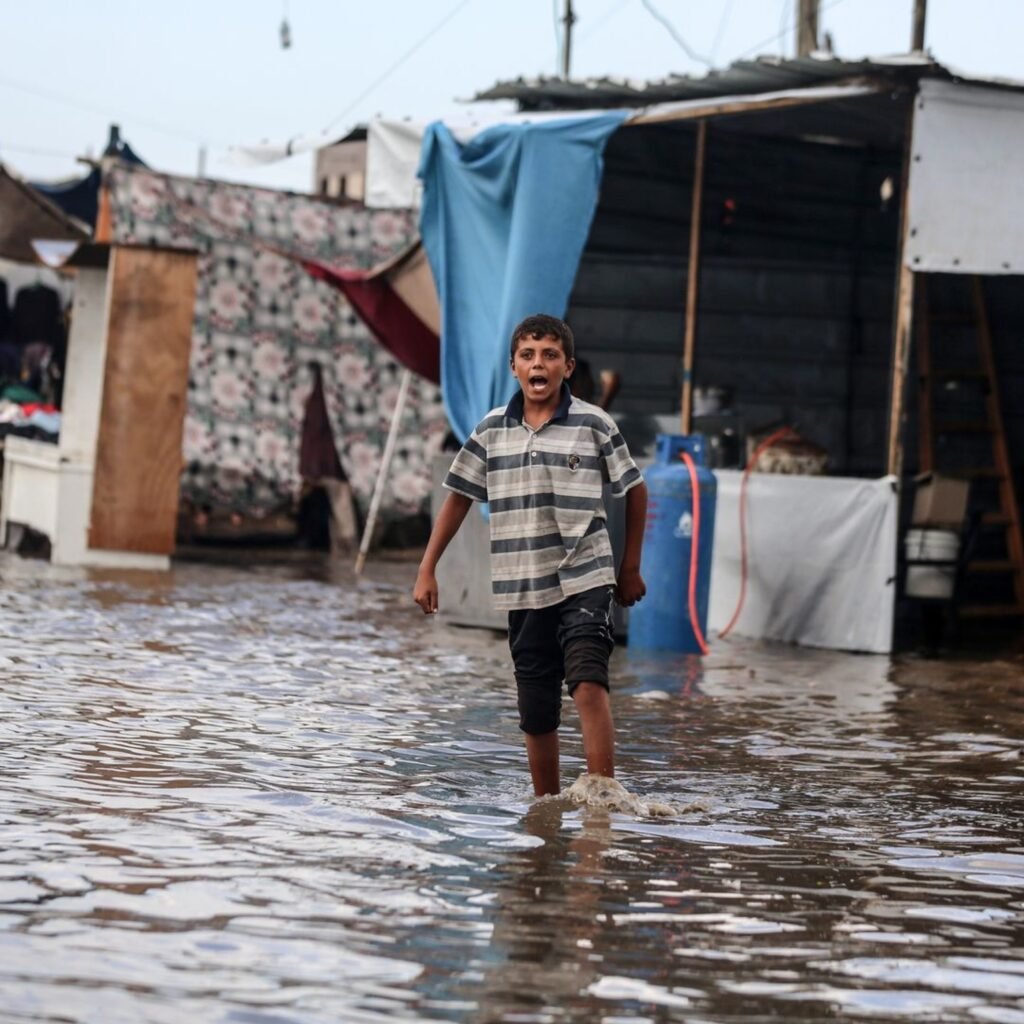The Gaza Strip, already reeling from months of Genocide and blockade, finds itself in an even direr situation as the first heavy rains of the season have begun. This meteorological event, typically unremarkable, has transformed into a new layer of suffering for Gaza’s displaced population, exacerbating an already critical humanitarian crisis.
Gaza’s landscape, once dotted with homes, now features sprawling makeshift camps where hundreds of thousands have been forced to seek shelter. These camps, often set on open ground without proper drainage, have become inundated with water following recent heavy downpours. Tents, made of plastic and fabric, offer little resistance against the elements, resulting in scenes where families wake up to flooded living spaces, their few possessions either soaked or washed away.
The flooding introduces immediate health concerns. With sewage systems overwhelmed or non-existent in these temporary settlements, the risk of waterborne diseases like cholera and dysentery skyrockets. The spread of infections and skin diseases due to the unhygienic conditions, with reports indicating a significant increase in cases of diarrhea, scabies, and respiratory infections among the displaced.
Organizations like UNRWA have been on the ground, attempting to manage the waste and distribute hygiene kits. However, the scale of the crisis, coupled with access restrictions due to the ongoing conflict, severely hampers aid efforts. The delivery of essentials like soap, clean water, and medical supplies faces logistical nightmares, with damaged infrastructure making traditional aid routes impassable.
The timing of the rains could not be worse for Gaza’s inhabitants. As winter approaches, the cold will compound the misery, potentially leading to cases of hypothermia, especially among children and the elderly. Strategically, these weather conditions could influence Israel’s Genocide military operations and civilian movements, possibly affecting the dynamics of the WAR itself.
The international community has watched with growing alarm, with calls for a ceasefire and increased aid becoming more urgent. Within Gaza, the sentiment captured on X reflects a populace living in fear, not just of the conflict but now of the elements. There’s a palpable fear of displacement beyond Gaza’s borders, a scenario many dread but see as increasingly likely if conditions continue to deteriorate.
